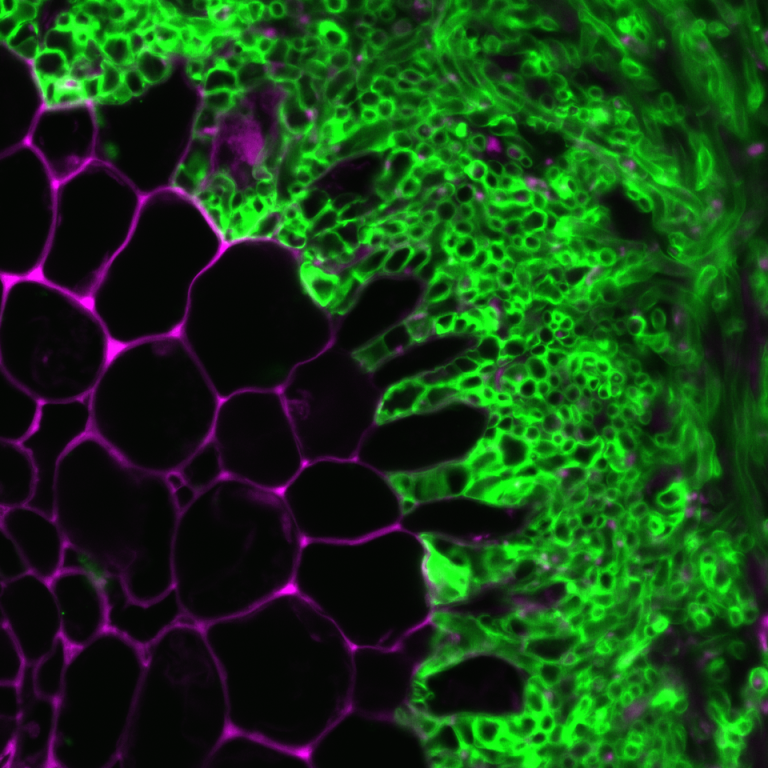In the production of biofuels from nonfood crops, it helps to start with the right plants. They need to be hardy and grow fast, thriving even in conditions not typically suited for agriculture.
In the search for suitable plants for biofuels production, ORNL scientists noticed that successful candidates had something in common: They had all formed a mutually beneficial relationship with soil fungi.
When united, certain fungi form a protective sheath around plant roots with remarkable benefits, increasing nutrient uptake and even extending outward to communicate with other plants about spreading pathogens and pests. In return, plants feed carbon to the fungal partner, encouraging its growth.
More than 80 percent of plant species are able to benefit from this symbiosis. The relationship is believed to have led to the successful colonization of land by plants, enabling vast forests and prairies.

Now, after years of experimentation aided by recent advances in plant genomics and high-performance computing, a team of scientists led by ORNL under the Plant Microbe Interfaces Project has found one of the genetic triggers for the symbiosis and successfully facilitated the relationship in a plant that had been resistant to it.
“We can use this symbiosis to enhance certain conditions in plants such as resistance to drought, pathogens, improving nitrogen and nutrition uptake and more,” said ORNL molecular geneticist Jessy Labbe. “The resulting plants would grow larger and need less water and fertilizer, for instance.”
The scientists were studying the symbiosis formed by certain species of Populus—or poplar trees—and the fungus Laccaria bicolor (L. bicolor). They used ORNL supercomputers and genome sequences produced at the DOE Joint Genome Institute to narrow down the search to a particular receptor protein, PtLecRLK1. Once they had identified the likely candidate gene, the researchers took to the lab to validate their findings.
They chose to experiment on Arabidopsis, a mustard plant commonly used as a model when studying crops, which traditionally does not interact with the fungus L. bicolor and even considers it a threat. The scientists created an engineered version of the plant that expresses the PtLecRLK1 protein and then inoculated the plants with the fungus. The fungus L. bicolor completely enveloped the plant’s root tips, forming a fungal sheath indicative of symbiote formation.
“If we can make Arabidopsis interact with this fungus, then we believe we can make other biofuel crops like switchgrass, or food crops like corn, also interact and confer the exact same benefit,” said ORNL quantitative geneticist Wellington Muchero. “It opens up all sorts of opportunities in diverse plant systems. Surprisingly, one gene is all you need.”
The work dovetails with one of the key goals of the Center for Bioenergy Innovation at ORNL: to create sustainable biomass feedstock crops.
This is a remarkable achievement. Using this technology, we could target as many as 20 to 40 million acres of marginal land with hardy crops that need less water, while supporting rural economies and supplying sustainable alternatives for gasoline and industrial feedstocks.
The scientists plan to continue analyzing the engineered symbiosis and to conduct similar experiments with plants such as switchgrass and rice.





